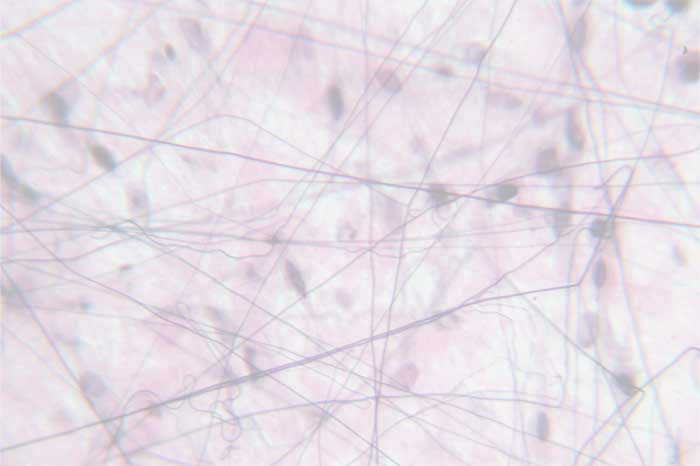Loose areolar connective tissue is usually the first connective tissue to be discussed as it provides several components that lend to it unique tissue characteristics. Other connective tissues will emphasize either one or another of the components found in this tissue; and therefore it is a good one to start with.
First, the tissue has a variety of fibers:
• Collagenous fibers that are characterized by strength
• Elastic fibers characterized by their elasticity
• Reticular fibers that support a variety of cell types
within the matrix
Cells found within loose areolar connective tissue include:
• Macrophages that phagocytose unwanted cellular debris
and microorganisms.
• Plasma cells that secrete antibodies.
• Mast cells that secrete histamine, a chemical that
induces an inflammatory response.
All three of these cell types clearly have a defensive / immune function.
Other cells will include:
• Fibroblasts, cells that make the fibers found within
the matrix.
Other cells could be found, but what is clear is that we have a tissue that
is strong, elastic and has immune function.
The location of loose areolar connective tissue can be found in the subcutaneous layer of the integument, as well as binding organs and tissue parts together.
